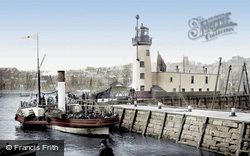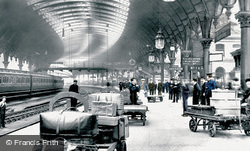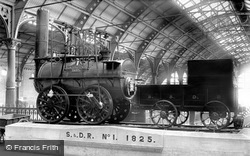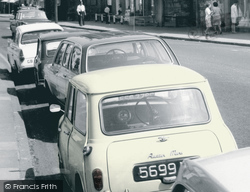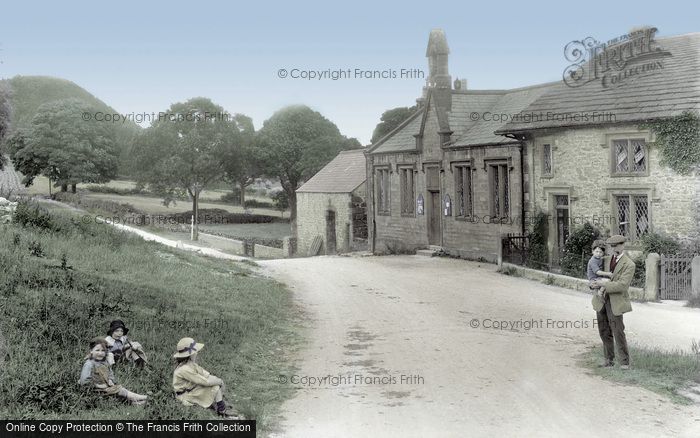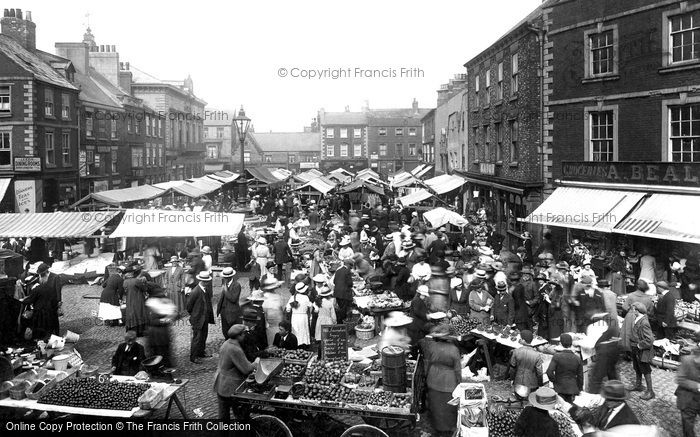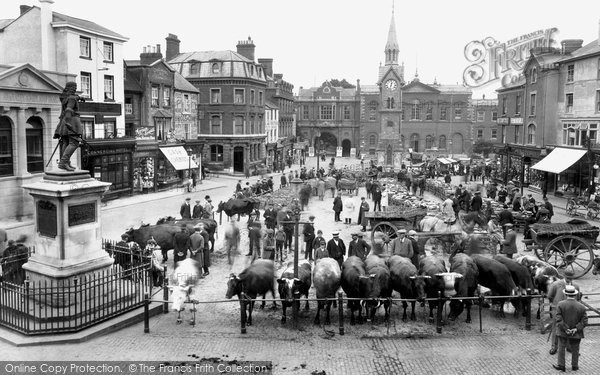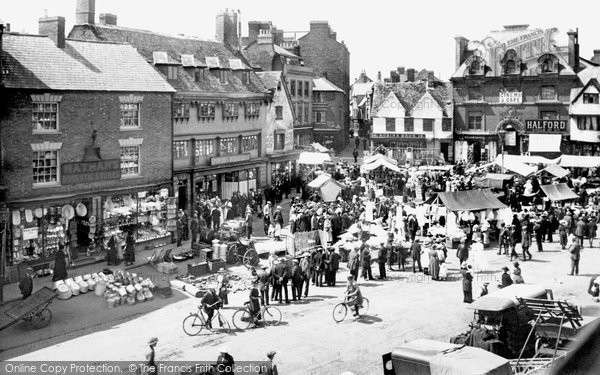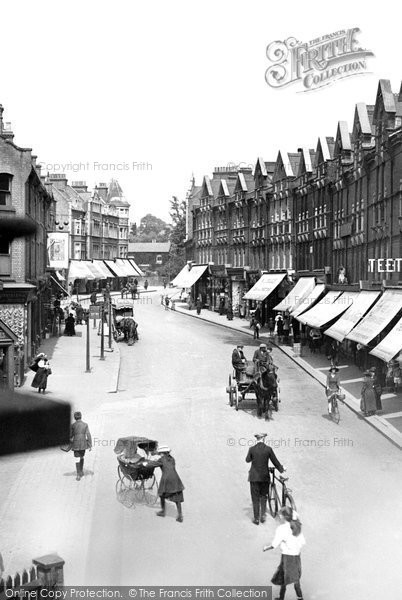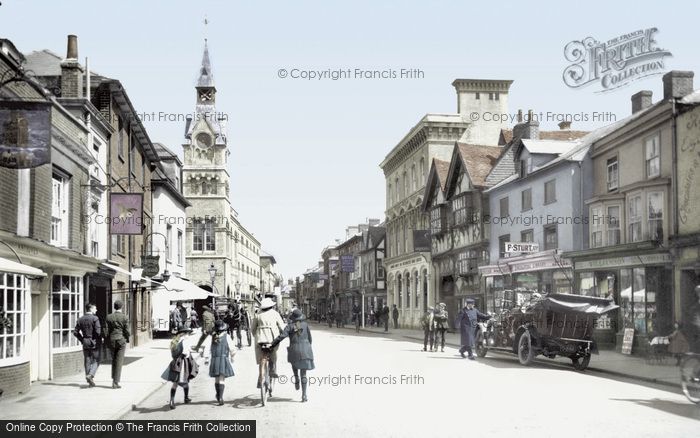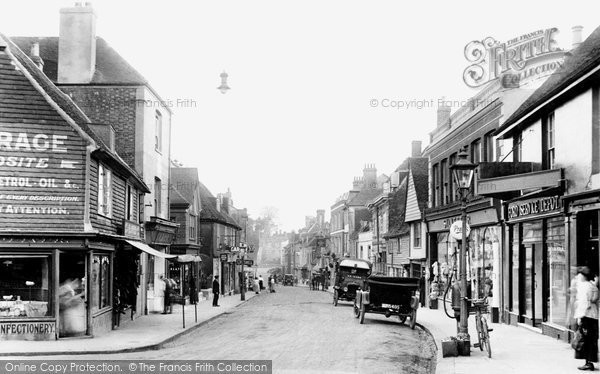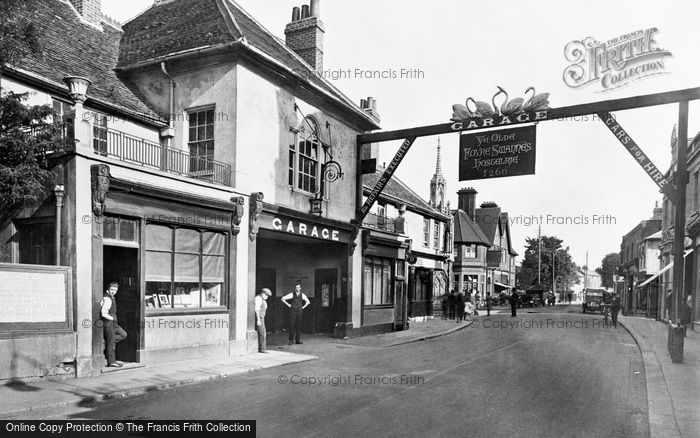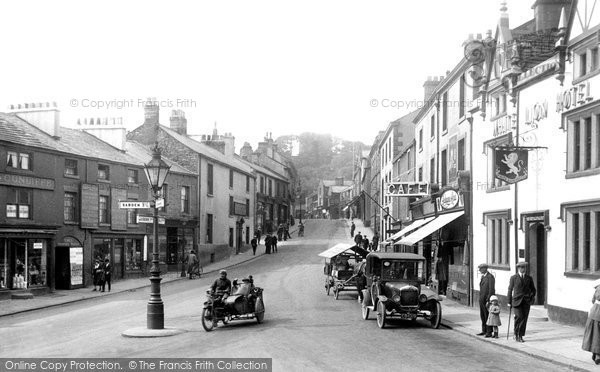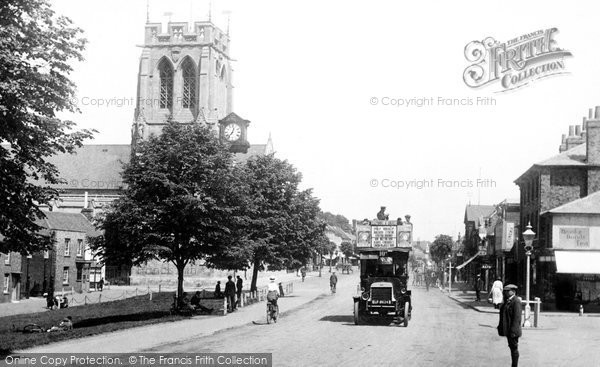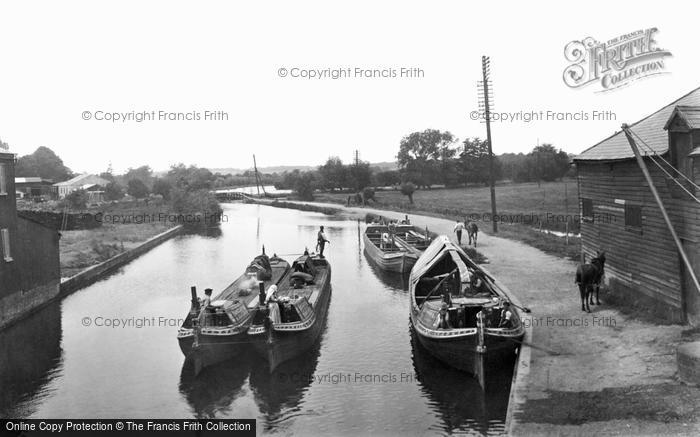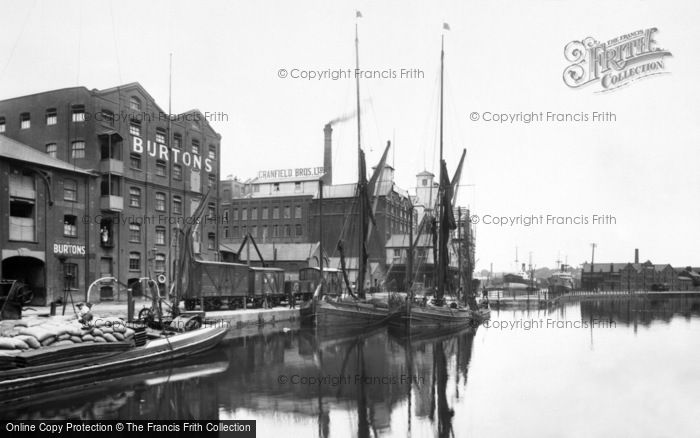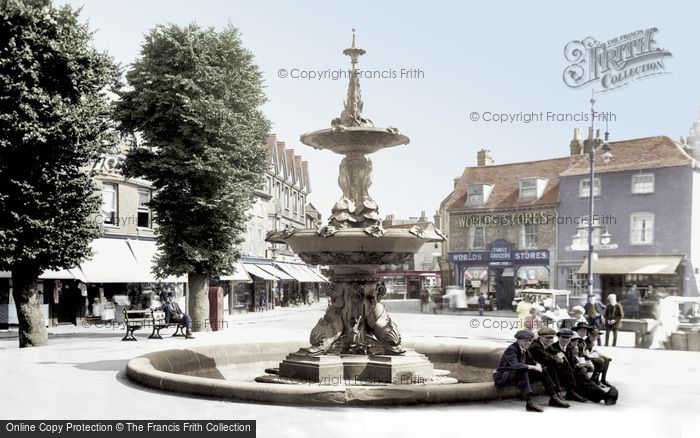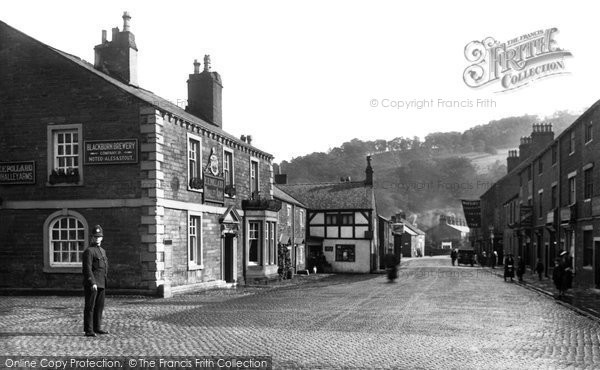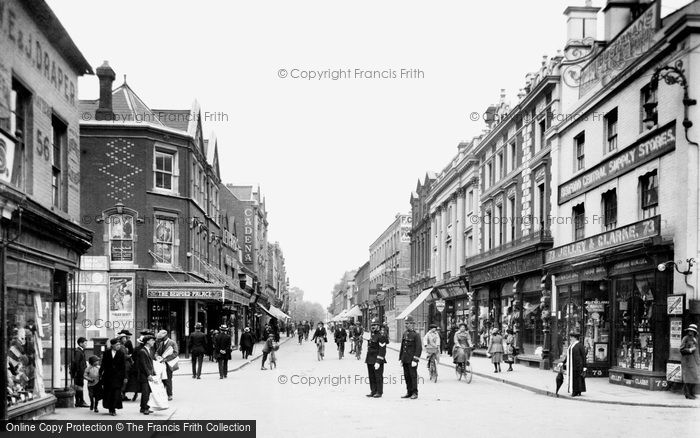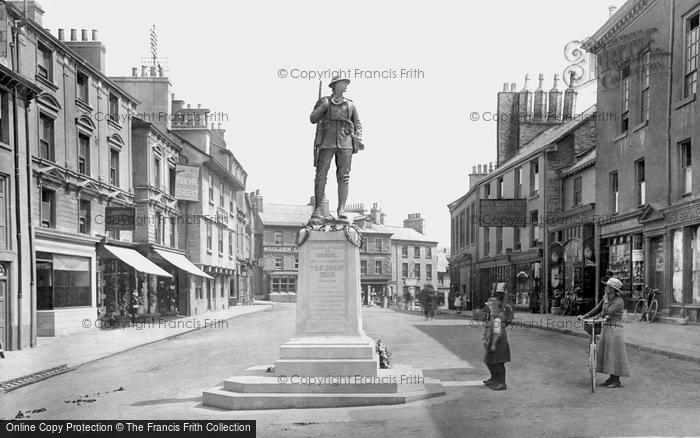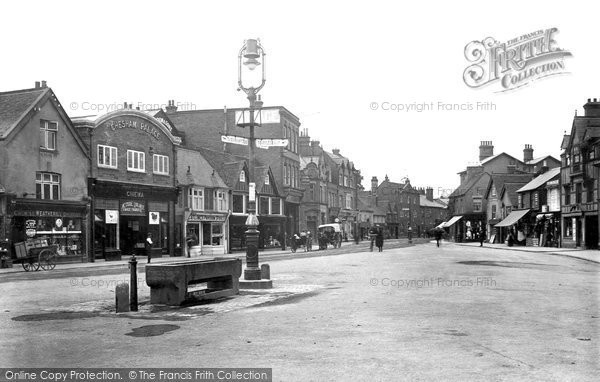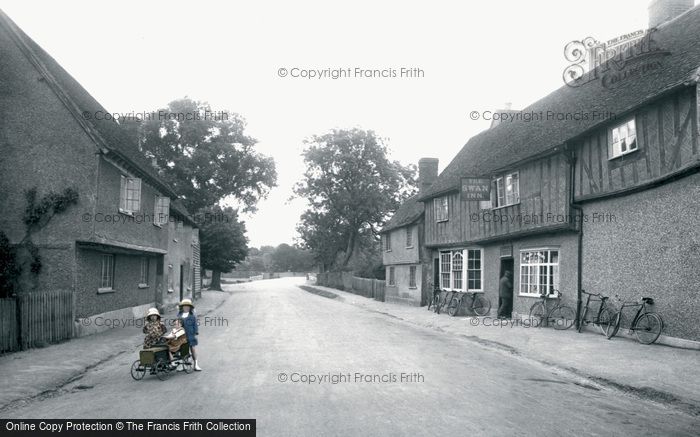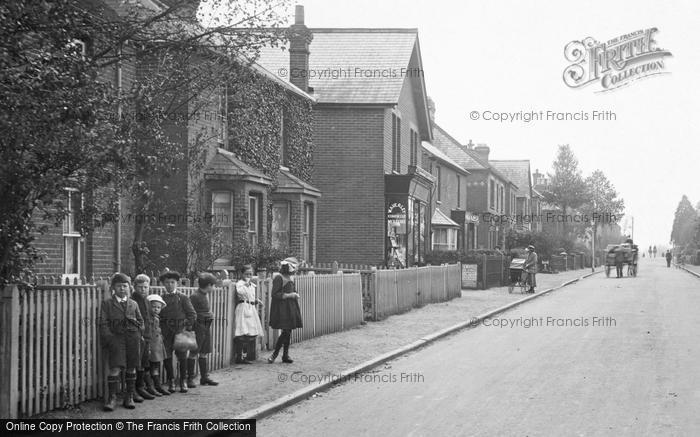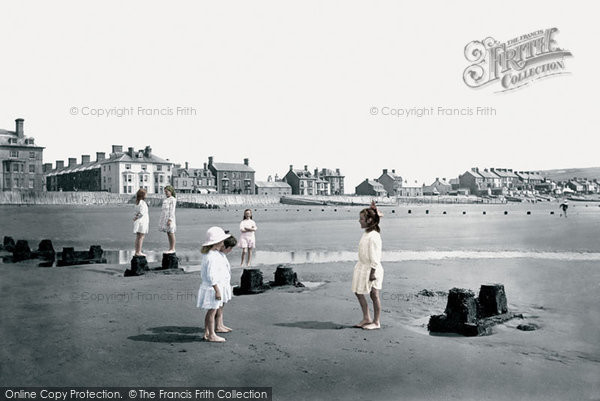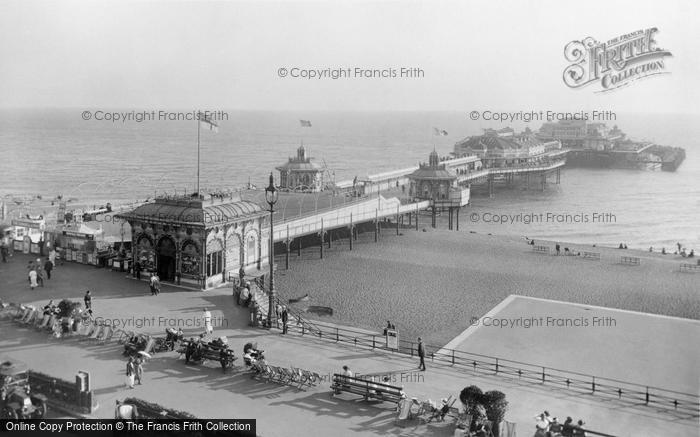Life in 1921
Published on
January 3rd, 2022
The 1921 UK Census information will be published online on 6th January 2022. This will be the first time that this information will be available for anyone to search it, either online or in an archive, and is an event eagerly awaited by genealogists, historians and everyone compiling their own family history.
To mark this exciting and important event, we invite you to take a trip back in time with us to one hundred years ago, as we celebrate the launch of the 1921 UK Census information with this selection of nostalgic historical photographs from The Francis Frith Collection depicting life as it was in 1921. Some of these photographs are in the original black and white versions, whilst others have been charmingly colour tinted by hand in the old fashioned way.
Where were YOUR ancestors living in 1921, and what were they up to?
In 1921 few homes had refrigerators, domestic freezers were a novelty for the distant future, and convenience foods were unheard-of. The hard-working housewife bought fresh food nearly every day, and street markets were a regular and vibrant part of the life of most towns. This photograph vividly captures the hustle and bustle of market day at Knaresborough in Yorkshire.
Many British towns originated as local market centres, with their streets focussed on the market place. From the earliest times this was a place of hustle and bustle - and when animals were sold in the town centre on market and fair days, it was a place of dirt and smells too. This photograph shows a livestock sale of cattle and sheep still being held in the Market Square in the centre of Aylesbury in Buckinghamshire in 1921. The last livestock sale in the square took place a few years later, in 1927.
In the 1920s the produce market at Banbury in Oxfordshire was a huddle of stalls on a triangle of land towards Butchers Row, a medieval way which entered the Market Place by the side of Robins Bros shop, seen in the centre background of this photograph. Many permanent shopkeepers in this part of Banbury resented the loss of some of their trade to the market regulars and casuals who did business under the awnings. In an attempt to tackle this problem they paid rent on the land in front of their premises and sometimes laid out goods there, as we can see here. Nathan's Domestic Stores (left) and Robins Bros (centre) were typical examples of stores whose owners made good use of pavements. At Nathan's, a common sight was a pile of galvanised buckets and also tin baths, reminding us that many households at this time did not have modern-style bathrooms. The large ash-pan trade sign on the frontage of Nathan's over the name-board was typical of many pictorial trade signs still to be found around British towns at this time.
One of the most notable features of the urban photographs taken in 1921 in The Francis Frith Collection is the scarcity of motor traffic in many views. It is now generally accepted that the first car to run on British roads was a custom-built Panhard-Levassor that the pioneering automobilist the Honourable Evelyn Ellis (1843-1913) imported from France in July 1895. Although a census of traffic by the UK's Department of Transport in 1923 recorded 383,525 motor cars on British roads in that year, the era of mass motoring was only just beginning: that 1923 traffic census showed there were more bicycles on the road then than any other vehicle, and horse-drawn vehicles were still a common sight. In this photograph taken in South Woodford in Greater London in 1921, all forms of traffic can be seen except motorised – pedestrians, a girl pushing a heavy, cumbersome pram, cyclists, a horse and cart, and a horse-drawn wagon parked by the pavement on the left-hand side, with the horse enjoying a quick snack from its nose-bag.
Today, when there is so much vehicular traffic in our towns and cities, it is almost impossible to believe that in 1921 the students at Farnham Girls' Grammar School, dressed in gymslips and uniform felt hats, could run along the road in the centre of this Surrey town keeping up with a girl riding a bicycle. Note the impressive large motor car parked on the right hand side, with its chauffeur in attendance.
The motor car is well provided for in this 1921 photograph of the High Street at Battle in Sussex. On the left a well publicised garage displays the AA insignia and advertises Shell petrol. On the right are the Ford Service Depot with a Pratt's Petrol pump sited on the pavement right beside the road - something that would give Health & Safety inspectors nightmares nowadays!
In 1921 the spacious frontage of the 13th-century Foure Swannes Hotel at Waltham Cross in Hertfordshire was clearly promoting the hotel's new services for the growing number of motorists, with a repair garage and cars for hire. Today, only the gallows pole across the street remains of its distinctive sign, while the hotel building itself has been replaced by the Pavilions shopping centre.
A motorbike and sidecar can be seen in this photograph of Clitheroe in Lancashire. These were very popular in the inter-war years, for they were a cheap form of transport.
As can be seen from the clock on St John's Church, this is a lunchtime view of an early London omnibus making its way along Epping's wide High Street, with the conductor issuing a ticket on the open-air upper deck.
Although Britain's canal network was in decline in the 1920s, unable to compete with the railways and the emerging road haulage business, there was still some commercial traffic on the waterways at this time. This view shows part of the Grand Junction Canal at Rickmansworth in south-west Hertfordshire, which was re-designated the Grand Union Canal in 1929 when it was linked up with seven other canals. The photograph portrays an excellent example of co-operation between barges on the busy canal network. The two central barges have been lashed together in order to bypass those moored alongside the canal bank. The barge horse of one of the craft is being led forward along the towpath and will soon be harnessed up again, whilst the other waits on the right for the manoeuvre to be completed. The bargee of one of the craft stands on the bow ready to cast the towing line ashore, and the bargee woman at the tiller behind him is still wearing a traditional bonnet, even in the 1920s.
Ipswich, at the head of the Orwell Estuary in Suffolk, has been a major port for centuries. This photograph of St Peter's Dock was taken at high tide in what is the top of New Cut which was created to form a bypass for the tidal River Orwell when the Wet Dock was built, the non-tidal part of the port of Ipswich; at low tide, the area dries right out. The two steamships in the background of this view are in the Wet Dock. Spritsail barges like those moored at the dock in this view were very much the mainstay of trade along the east coast at this time and were the last working barges in northern Europe, continuing until the early 1960s. The main cargoes brought into Ipswich were grain, barley, coal and timber.
Many places look very different now from how they were in 1921, and the Frith photographic archive is a fascinating documentary record of this. For example, from 1876 the ancient open space of Frogmore in High Wycombe in Buckinghamshire was blessed with well-trimmed trees and the fine ornate cast iron fountain seen in this view, designed with suitable watery imagery with the fountain supported by pelicans and fierce-looking dolphins. Highway consideration dominated town planning later in the 20th century and Frogmore was stripped of its trees and paved over in the 1930s, although the fountain survived until it was removed during the Second World War, allegedly to provide scrap metal for the war effort.
Here we see the main street of Whalley in Lancashire, with a policeman on traffic duty at the junction with Accrington Road. In 1921 most police forces required their recruits to be at least 5 feet 10 inches (178 cm) tall, giving them a commanding presence enhanced by their high blue helmet. Behind the policeman is the Whalley Arms, at that time a Blackburn Brewery pub. Note the street paved with stone setts. The road is now tarmacked, the junction is now a roundabout, and the former pub building now houses a Co-op supermarket.
The photographer stood at the northern end of Bedford's High Street for this picture. To modern eyes the phalanx of cyclists and the two smart white-gloved policemen lend an essence of quaintness. None of the trading names above the shops, nor the Bedford Palace theatre-cum-cinema, have survived into the 21st century. The building on the far left was demolished for the 1950s Debenhams. Silver Street, between it and the Bedford Palace, is now a pedestrianised shopping precinct. The buildings to the right of the policemen went in the 1960s.
For everyone in Britain in 1921 the tragedy of the First World War was a very recent memory. Throughout the 1920s war memorials were erected in nearly every village, town and city throughout the UK, their sad lists of names commemorating the sacrifice of those who went off to fight and didn’t come home. This fine memorial at Kendal in Cumbria is inscribed with the names of 316 local men who died in the First World War (then referred to as the Great War), and was unveiled on 1st July 1921 in front of a vast crowd.
The focal points of this view of an unbelievably empty Broadway in the centre of Chesham in Buckinghamshire are the ornate lamp post and water trough for horses, a reminder of the prevalence of horse-drawn transport in the past; however, shortly after this photograph was taken the water trough was replaced by the town's War Memorial, which was unveiled in July 1921. The impressive Chesham Palace Cinema in the background shows how popular moving pictures were becoming in the 1920s. Earlier film shows had taken place in theatres, music halls, exhibitions and even circus tents. Of course, all films were still silent movies in 1921.
In 1921 the only traffic on the main road through the Bedfordshire village of Elstow was this toy car with its young driver and attendants. The local pub was then the main social centre for many villages like this and when this photograph was taken a number of customers at the Swan Inn had arrived on bicycles which they left parked outside and, unlike today, unchained-up with no fear of them being stolen! The Swan Inn at Elstow is no longer in business, and the historic building that housed it in this view is now a private residence.
The boys on the left of this photograph could be the unruly young lad William Brown of 'Just William' fame and his gang, the Outlaws. First published in 1922, 'Just William' was the first collection of stories by Richmal Crompton about the misadventures of William and his friends. She wrote a total of 39 books in her extremely popular series about William that were published over a period of almost fifty years, until 1970. Note how all the boys are wearing short trousers. Until the 1960s small boys commonly wore short trousers until a certain age - usually about thirteen - when they graduated to long ones. They considered themselves to be tough in their shorts; long trousers before your time were wimpish. Open to the elements, knees were constantly grazed, grass-stained and muddy, but they were badges of honour and pride. The shorts were baggy and generally just down to the knee level; often over-large hand-me-downs, they would be held up by braces or string, or by those elasticated striped belts with an S-shaped metal 'snake' clasp.
The 1920s were still well within the era of the Great British Holiday, when a seaside holiday or day trip to enjoy the fun of the beach was a great treat for most people. Although these small girls on the beach at Borth in Mid Wales were obviously carefully posed by the photographer they look like they were having great fun as they waited for him to take his shot, which has given us a lovely study of children's fashion of the time. The girls are wearing light short dresses – quite a contrast to their Victorian and Edwardian predecessors, who wore several layers of clothes, even on the beach.
This was a view familiar to thousands of holidaymakers in 1921, but one which is now sadly lost to us. Brighton's famous West Pier on the Sussex coast was one of the first piers built as an entertainment centre as well as a landing stage for paddle steamers. Designed by the renowned pier engineer Eugenius Birch (1818-1884) and considered by many to have been his masterpiece, West Pier opened in 1866 and was gradually embellished over the years. This photograph shows it after a bandstand midway down the pier had been removed as part of a widening process, and the large concert hall of 1916 had been built halfway along in its stead. The beautiful West Pier is seen thriving in its heyday in this image, but sadly it fell into disrepair and closed in 1975. After suffering decades of wind and storm damage and two disastrous fires in 2003, the pier was partially demolished in 2010. Its skeletal remains now form an eerie feature of Brighton's seafront as the remaining wreckage is gradually collapsing into the sea.
This post has the following tags:
Archives,Memories,Places.
You may find more posts of interest within those tags.
Join the thousands who receive our regular doses of warming nostalgia!
Have our latest blog posts and archive news delivered directly to your
inbox.
Absolutely free. Unsubscribe anytime.



